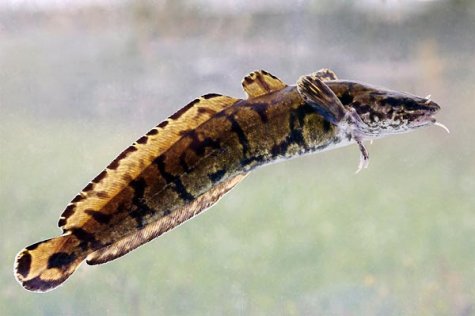Burbot - the only winter spawner in fresh waters
Photo: Tiit Hunt, loodusmuuseum.ee
Translation: Liis
Burbot
Burbot; lawyer Luts Lota lota
We asked Vladislav Korzets how things were with the spawning of burbots? Some ten days ago spawning had not started yet in rivers. The water temperature in December was high, but breeding should proceed by now.
The burbot is a gadiform (cod fish) species that once moved from the sea to inhabit fresh waters. Habitats are oxygen-rich water bodies with clean and cold water. In Estonia burbots inhabit about a hundred lakes and rivers and brackish water seabays.
The burbot’s body is long and supple and covered with slippery slime; the small scales are located in the skin. A broad and flat head, on the lower jaw the barbel characteristic for cod fish, quite large eyes. The tail seems to make up half the body; the first dorsal or back fin is short, the second long, reaching to the caudal or tail fin, as does the anal fin. The colour of the back varies from yellow to dark brown, the sides are patterned, the belly white.
Burbots become sexually mature at three to five years and are then thirty to fifty centimetres long. While burbot spawning may be on in rivers it will usually take place somewhat later in lakes. The mating period of burbots in Lake Peipsi lasts up to seven weeks. Spawning is on gravelly or sand bottoms with moving water but the water depth can vary widely. Characteristically for gadiform fishes the roe is very fine and there is much of it. Incubation of the roe lasts three months.
The burbot is a diet fish with very delicate, white flesh. Burbot roe with onion and sour cream on rye bread is a true delicacy, seldom eaten in Estonia.









